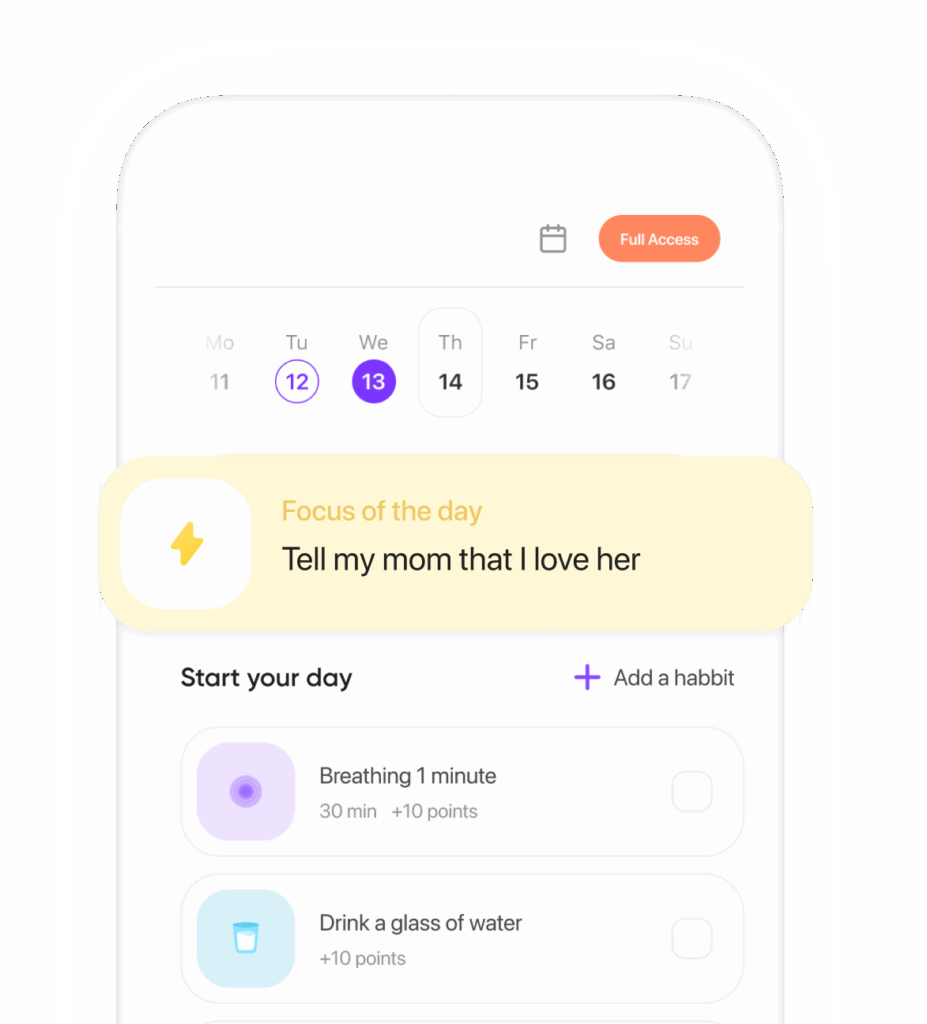Guilt, lurking quietly, tends to steer our actions in subtle yet profound ways. You know, it’s like a little voice whispering, “What you did wasn’t enough.” While a certain degree of guilt might nudge us toward personal growth—urging amends or encouraging better choices—excessive guilt can be just plain paralyzing. For Generation Z and Millennial women aiming for self-growth, grasping how to break free from guilt is vital for mental health.
Table of Contents
- Understanding Guilt
- Step 1: Identify the Source of Guilt
- Step 2: Practice Self-Compassion
- Step 3: Make Amends and Let Go
- Conclusion
Understanding Guilt
Before jumping into ways to ease guilt, we’d better grasp its essence first. The journal Emotion once revealed how guilt and shame are cousins—related, yes, but different. You see, guilt often springs from an act you deem as wrong, while shame roots itself in internalized flaws. Guilt can spark positive change, but unchecked, it spirals—landing you in the depths of anxiety and depression (Tangney, Stuewig, & Mashek, 2007). Does this mean every guilt feeling is bad? Not necessarily.
Step 1: Identify the Source of Guilt
First things first: find out where your guilt’s coming from. Is it tied to a specific event, or more like an omnipresent cloud with no clear origins? Put pen to paper—journaling works wonders here. Noting down the whens and whys helps spotlight patterns and underlying issues. In tandem, cognitive-behavioral therapy (CBT) emerges as an ally. This technique aids in reshaping those irrational thoughts that fan guilt’s flame (Hofmann et al., 2012).
The Role of Culture and Upbringing
Ever wonder why guilt feels so different for everyone? It’s often tangled in the web of cultural and upbringing influences. Studies show women tend to internalize guilt more due to societal pressures—caretaking and responsibility, anyone? (Else-Quest, Higgins, Allison, & Morton, 2012). Is this bad? Well, recognizing these pressures can help you figure out if the guilt is self-made or societally spoon-fed.
Step 2: Practice Self-Compassion
Self-compassion is about giving yourself the kindness you’d offer a dear friend. Dr. Kristin Neff, a trailblazer in self-compassion research, outlines three essentials: self-kindness, common humanity, and mindfulness. Research supports the positive impact of self-compassion on minimizing guilt—encouraging resilience along the way (Neff, 2003).
Implementing Mindfulness Techniques
Mindfulness, a beautiful companion to self-compassion, keeps you grounded—helping observe those wayward thoughts without judgment. In a publication in Clinical Psychology Review, it emerged that mindfulness-based practices greatly reduce symptoms of guilt-driven anxiety and depression (Hofmann et al., 2010). Want an easy start? Try meditation, deep breathing, or a simple body scan.
Step 3: Make Amends and Let Go
When guilt roots itself in a particular action, making amends is liberating. This could mean owning up to a mistake or taking reparative steps. The Journal of Personality and Social Psychology reports that heartfelt apologies not only mend broken bonds—they diminish personal guilt too (Schumann, 2014). Why hold onto that burden?
The Power of Forgiveness
Forgiveness, aimed at both self and others, paves the way for liberation from guilt’s grip. Research from the Journal of Counseling Psychology associates forgiveness with lower depression and heightened well-being (Toussaint, Worthington, & Williams, 2012). Keep in mind, forgiving doesn’t imply erasing or excusing abusive actions, just letting go of their emotional chokehold.
The Science Behind Letting Go
It’s tricky, that letting go thing—easier said than done. But science can light the path. Experts say clinging to guilt strengthens neural circuits that feed negative cycles. However, neuroplasticity offers a lifeline, showing that new and healthy thought processes can be nurtured, reducing guilt’s power (Doidge, 2007).
Conclusion
Easing the hold of guilt demands a journey of self-reflection, compassion, and proactive steps. Pinpointing guilt’s origins, bathing oneself in self-compassion, and seeking amends can unburden the soul and cultivate a brighter outlook. Mistakes? They’re common, and growth is often born from them.
At its core, tackling guilt involves tracing its roots, embracing self-kindness, and pursuing forgiveness with intention. As you embark on this path, remember: you’re not alone.
Begin now—journal about a recent guilty moment and consider how you could show yourself some grace. Discuss your progress with pals or a mental health specialist to cement your growth.
References
- Else-Quest, N. M., Higgins, A., Allison, C., & Morton, L. C. (2012). Gender differences in self-conscious emotional experience: a meta-analysis. Psychological Bulletin, 138(5), 947-981.
- Hofmann, S. G., Grossman, P., & Hinton, D. E. (2011). Loving-kindness and compassion meditation: Potential for psychological interventions. Clinical Psychology Review, 31(7), 1126-1132.
- Hofmann, S. G., Sawyer, A. T., Witt, A. A., & Oh, D. (2010). The effect of mindfulness-based therapy on anxiety and depression: A meta-analytic review. Journal of Consulting and Clinical Psychology, 78(2), 169.
- Neff, K. D. (2003). The development and validation of a scale to measure self-compassion. Self and Identity, 2(3), 223-250.
- Schumann, K. (2014). An affirmed self and a better apology: The effect of self-affirmation on transgressors’ willingness to apologize. Journal of Experimental Social Psychology, 54, 89-96.
- Tangney, J. P., Stuewig, J., & Mashek, D. J. (2007). Moral emotions and moral behavior. Annual Review of Psychology, 58, 345-372.
- Toussaint, L., Worthington, E. L., & Williams, D. R. (2012). Forgiveness and health: A meta-analytic review. Journal of Counseling Psychology, 59(1), 1-12.
Ready to transform your life? Install now ↴
Join 1.5M+ people using AI-powered app for better mental health, habits, and happiness. 90% of users report positive changes in 2 weeks.
